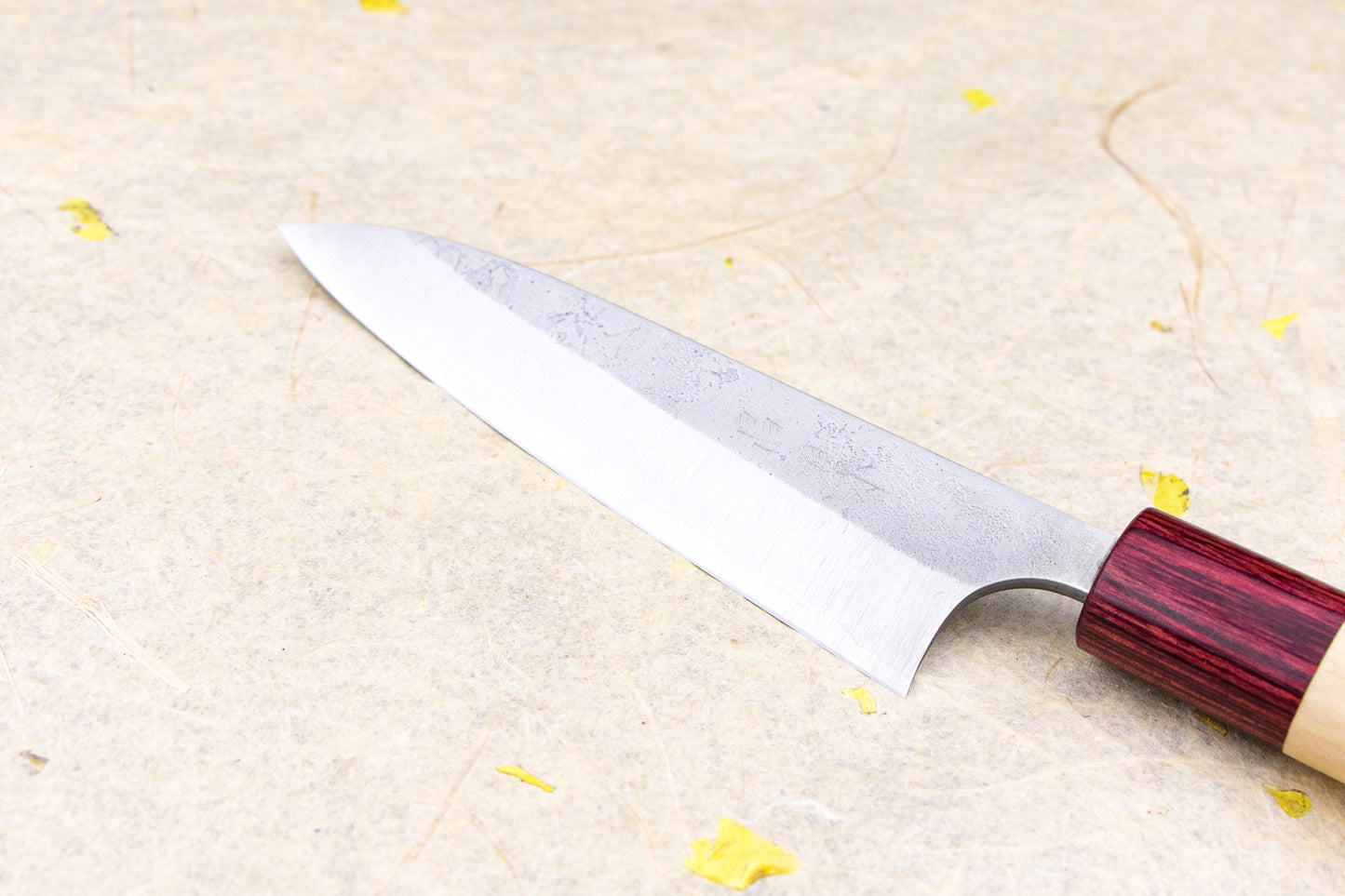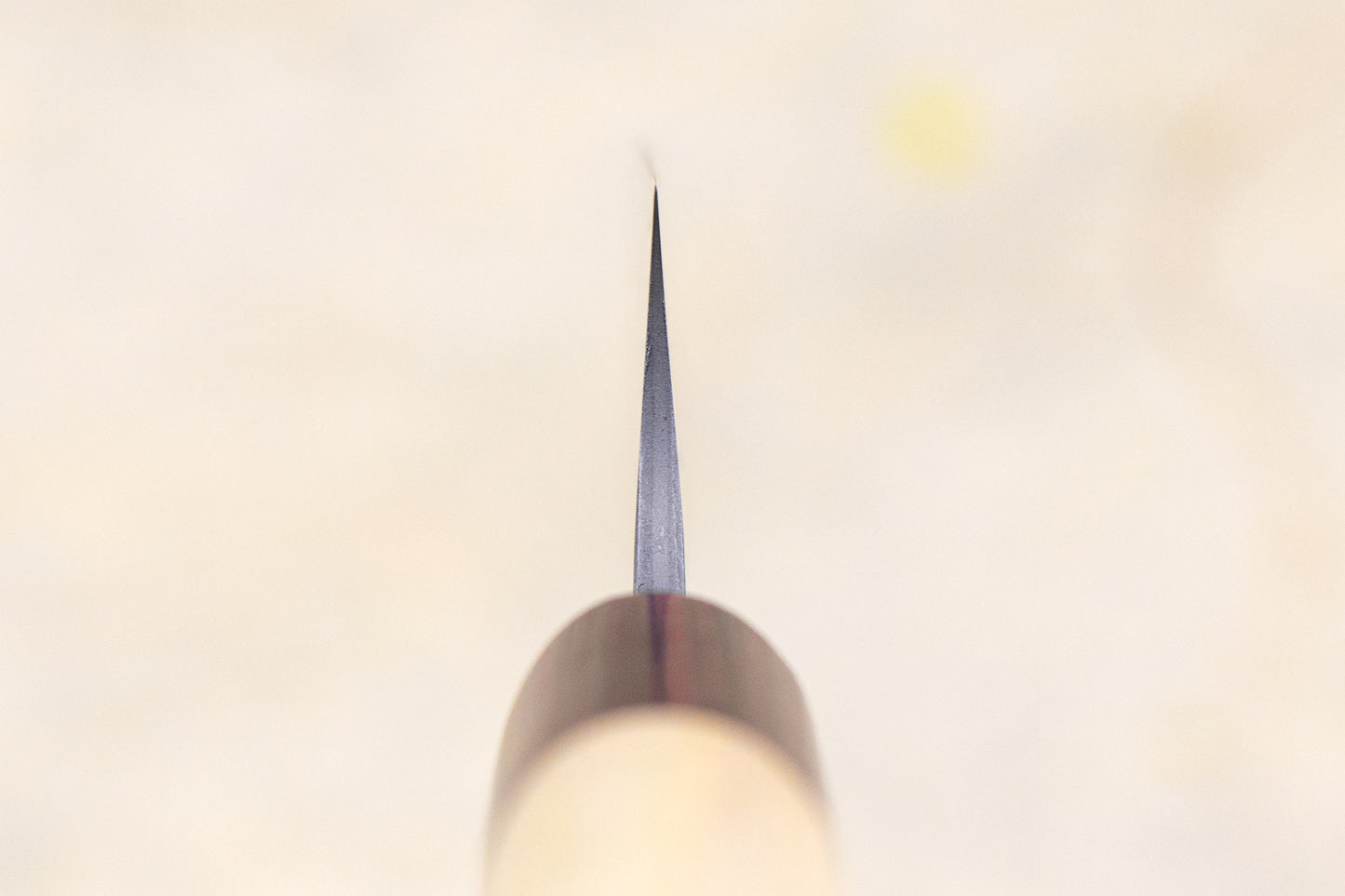Masakage Yuki Petty 120mm
Masakage Yuki Petty 120mm
Couldn't load pickup availability
About Masakage Yuki -
When you pick up the Yuki, you’ll notice just how light it is. The steel is hammered thinner than your average knife, which lets it fly through dense veggies with ease. Shirogami, or ‘white carbon’ in English, is a very traditional steel prized by blacksmiths and knife nerds alike for its great edge retention and legendary sharpness. Yuki knives are clad in softer stainless steel, so only the very edge has to be kept dry to prevent rust. This line is one of our most popular and a frequent gateway into the world of hand-hammered knives.
The name Yuki (meaning ‘snow’ in Japanese) comes from the frosty looking ‘nashiji,’ or ‘pear skin,’ finish.
Yoshimi Kato is the son-in-law and successor of Hiroshi Kato, one of the founders of Takefu Knife Village. The transition from apprentice to master blacksmith and company head has been seamless for Yoshimi-san. He tells me that he strives to continuously improve his skill day-by-day, and I look forward to working with the next generation of Kato for decades to come!
Yoshimi-san is a quiet man, calmly pushing forward at a steady pace and speaking more through his knives than his words. And boy, do they speak! Yoshimi-san’s knives are among the most gorgeous, laser-like blades I’ve ever handled.
About the Shape - This is the knife for smaller jobs that are done on a cutting board. Perfect for slicing shallots, cutting herbs, and boning smaller proteins. Additionally, Petty knives are an indispensable tool for those who feel uncomfortable wielding a larger chef knife.
| Shape | |
|---|---|
| Blade Length | | |
| Blade Height | |
| Blade Thickness Above Heel | |
| Weight | |
| Steel Type |
Rust Prone ⓘ
This knife can rust, click to learn more.
|
| Rockwell Hardness | 62 - 63 |
| Edge/Bevel | |
| Handle | Wa (Japanese) Handle - Oval Magnolia Red Pakkawood Collar |
| Knifeline | Masakage Yuki |
| Blacksmith | Yoshimi Kato |
| Made in | Echizen, Fukui, Japan |
| Brand | Masakage |
A note about measurements: Handmade Japanese knives can vary in their dimensions, so these measurements are only an example.
Knife Care
Knife Care
Shipping and Returns
Shipping and Returns
We aim to ship your order within 1 business day at Knifewear, if there is a hold up, we'll aim to let you know and give you a timeline.
We offer $3 shipping on orders over $100* anywhere in Canada and $200* to customers in the USA. We ship worldwide, and offer up to the minute rates from our shipping partner DHL.
*Konro Grills and some other larger items are excluded from the free shipping offer.
How do I make a return on an online order?
No worries, we've got you sorted. Head over to https://knifewear.com/returns and follow the prompts.
Can I pick up my order Curbside / At the store?
Absolutely, as long as all the items you are looking for are in stock at the location you want to pickup from, you'll be able to select that at the checkout. If one or more items aren't at your preferred location we are happy to ship it to you.
Request Additional Info
Request Additional Info






